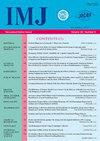APPROACHES TO COMBINED TREATMENT OF PATIENTS WITH CARDIOPULMONARY PATHOLOGY
Q4 Medicine
引用次数: 0
Abstract
Treatment and control of hypertension is an important clinical problem, especially in the case of concomitant risk factors and bronchoobstructive diseases. The use of antihypertensive drugs in the patients with bronchoobstructive pathology has certain features. The use of β−blockers for the treatment of hypertension in the patients with cardiopulmonary pathology helps to reduce mortality, the number of visits to the doctor, those to the emergency rooms and exacerbations of chronic obstructive pulmonary disease. Angiotensin II receptor antagonists are the preferred choice for the patients with chronic obstructive pulmonary disease, requiring the treatment with renin−angiotensin−aldosterone inhibitors compared with angiotensin−converting enzyme inhibitors. Statin therapy improves a shortness of breath, reduces exacerbations, hospitalizations and mortality in the patients with cardiopulmonary pathology. The use of anticoagulants and anti−platelet agents in this category of patients helps to reduce the future morbidity and mortality associated with thrombotic diseases. There are no safety concerns or contraindications to the use of calcium channel blockers or aldosterone receptor blockers (including spironolactone) in the patients with cardiopulmonary pathology, but high doses of diuretics should be used with caution. Pulmonary rehabilitation programs, which included either strength training or a combination of general exercise, were effective for both the patients with bronchoobstructive disease and comorbid conditions. However, the indications, components, regimen, and end goals of such programs for "complex patients" with several comorbid conditions that complicate each other are remained poorly understood. Key words: cardiopulmonary comorbidity, drug treatment, physical rehabilitation, hypertension, chronic obstructive pulmonary disease.心肺病理患者的综合治疗方法
高血压的治疗和控制是一个重要的临床问题,尤其是在伴有危险因素和支气管阻塞性疾病的情况下。抗高血压药物在支气管阻塞性病变患者中的应用具有一定的特点。在心肺病理患者中使用β−阻滞剂治疗高血压有助于降低死亡率、就诊次数、急诊室就诊次数和慢性阻塞性肺病的恶化。血管紧张素II受体拮抗剂是慢性阻塞性肺病患者的首选,与血管紧张素转换酶抑制剂相比,需要使用肾素-血管紧张素-醛固酮抑制剂进行治疗。他汀类药物治疗可改善心肺病理患者的呼吸急促,减少病情恶化、住院和死亡率。在这类患者中使用抗凝血剂和抗血小板药物有助于降低未来与血栓性疾病相关的发病率和死亡率。心肺病理患者使用钙通道阻滞剂或醛固酮受体阻滞剂(包括螺内酯)没有安全问题或禁忌症,但应谨慎使用大剂量利尿剂。肺康复计划,包括力量训练或综合锻炼,对支气管阻塞性疾病和合并症患者都有效。然而,对于患有多种相互复杂的合并症的“复杂患者”,此类计划的适应症、组成部分、方案和最终目标仍知之甚少。关键词:心肺共病,药物治疗,身体康复,高血压,慢性阻塞性肺病。
本文章由计算机程序翻译,如有差异,请以英文原文为准。
求助全文
约1分钟内获得全文
求助全文
来源期刊

International Medical Journal
医学-医学:内科
自引率
0.00%
发文量
21
审稿时长
4-8 weeks
期刊介绍:
The International Medical Journal is intended to provide a multidisciplinary forum for the exchange of ideas and information among professionals concerned with medicine and related disciplines in the world. It is recognized that many other disciplines have an important contribution to make in furthering knowledge of the physical life and mental life and the Editors welcome relevant contributions from them.
The Editors and Publishers wish to encourage a dialogue among the experts from different countries whose diverse cultures afford interesting and challenging alternatives to existing theories and practices. Priority will therefore be given to articles which are oriented to an international perspective. The journal will publish reviews of high quality on contemporary issues, significant clinical studies, and conceptual contributions, as well as serve in the rapid dissemination of important and relevant research findings.
The International Medical Journal (IMJ) was first established in 1994.
 求助内容:
求助内容: 应助结果提醒方式:
应助结果提醒方式:


